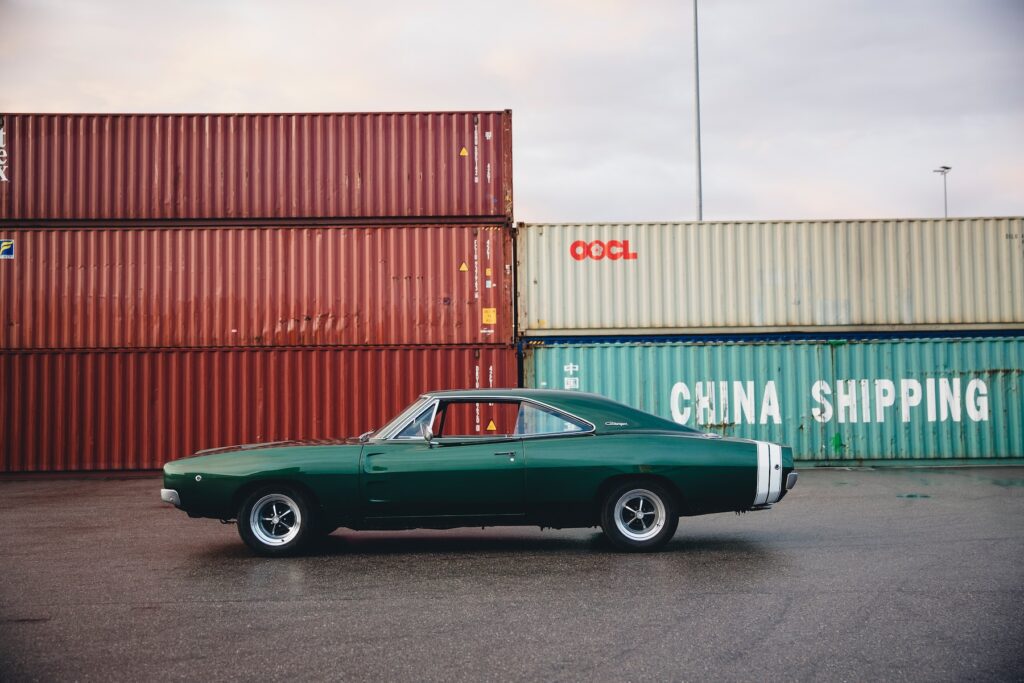
When you’re ready to ship a vehicle, understanding how auto transport companies set their rates can be a game-changer. Auto transport pricing isn’t as simple as charging by the mile. Instead, it’s influenced by several key factors that could save you money or catch you by surprise. For customers, knowing these factors helps set realistic expectations and allows for better planning. Whether you’re shipping a sedan, SUV, or luxury vehicle, the rates can vary significantly based on the car’s condition, the route, the timing, and even the type of transport selected.
What Factors Affect Auto Transport Rates?
Auto transport rates are influenced by a variety of factors, each playing a significant role in determining the final cost of shipping your vehicle. Understanding these factors can help customers get a clearer picture of why quotes vary from one transport company to another. Here’s a breakdown of the most critical variables:
1. Vehicle Type, Size, and Condition
The make, model, and condition of your vehicle directly impact shipping costs. Larger vehicles like trucks, SUVs, or vans take up more space on the carrier, meaning fewer cars can be transported at once, increasing the rate. Additionally, if a vehicle is inoperable or requires special handling, there could be extra fees associated with loading and unloading.
2. Distance and Route
One of the most significant factors in pricing is the distance between the pickup and drop-off locations. Longer distances naturally cost more, but the route also matters. Shipping between major cities on well-traveled routes typically costs less than shipping to or from rural areas. Routes with fewer carriers may require a detour or special arrangements, which could drive up the cost.
3. Seasonal Demand and Timing
Just like airlines and hotels, auto transport operates on a supply-and-demand model. Peak seasons—such as summer, when people are relocating, or winter, when snowbirds head south—tend to push rates higher. Shipping during off-peak times can result in lower rates, as there is less demand.
4. Type of Transport: Open vs. Enclosed Auto Transport
Choosing between open and enclosed car transport can also impact your final rate. Open transport, where vehicles are exposed to the elements, is more affordable and is the most common choice for standard vehicles. Enclosed transport offers additional protection but comes with a higher price tag, making it a better option for luxury or high-value cars.
The Role of Distance and Route in Pricing
Distance and route are two of the most important factors in determining auto transport costs. Simply put, the farther your vehicle needs to travel, the higher the cost. However, the type of route also plays a crucial role in pricing.
1. Urban vs. Rural Destinations
Shipping to or from major cities usually costs less than rural areas. In urban locations, there are more available carriers and established routes, leading to lower prices. On the other hand, rural or less-traveled routes may require carriers to go out of their way, increasing the cost due to added fuel and time.
2. Popular vs. Remote Routes
Routes between popular destinations tend to have more carriers available, which helps drive down costs. For example, shipping a car from New York to Los Angeles, a heavily trafficked route, is generally more affordable than transporting a vehicle between two smaller towns. More frequent shipments on popular routes create more competitive pricing among carriers.
3. The Impact of Fuel Prices and Tolls
Fluctuating fuel costs directly affect auto transport rates. When fuel prices rise, carriers often pass these additional costs on to the customer. Additionally, tolls on certain highways or bridges can add to the overall cost, particularly for long-distance shipments or when the carrier needs to use specific toll roads to reach the destination.
Seasonal Demand and Timing: Why It Matters in Car Shipping
Seasonal demand plays a significant role in determining auto transport rates, and timing your shipment strategically can lead to substantial savings. Just like many other industries, the auto transport sector experiences price fluctuations based on supply and demand throughout the year.
1. Peak Seasons for Auto Transport
The summer months are the peak season for auto transport, largely due to higher relocation rates, vacations, and college students moving. During this period, the increased demand for carriers drives up rates. Similarly, the snowbird season in late fall and early winter sees retirees and seasonal residents moving south for warmer weather, again creating a surge in demand.
2. Holiday Impact on Rates
Holidays can also affect pricing. Around major holidays like Thanksgiving, Christmas, and the Fourth of July, there is usually a spike in vehicle shipments, especially for people planning to move or travel. This increase in demand can push rates higher, and the limited availability of carriers during these times can cause further price hikes.
3. Booking in Off-Peak Times
To secure better rates, consider shipping your car during the off-peak seasons, such as early spring or late fall. During these periods, transport companies have more availability and are often willing to lower their rates to fill space on their carriers. Being flexible with your shipping dates can result in considerable cost savings.
Open vs Enclosed Auto Transport: What’s the Difference in Price?
When shipping your vehicle, you have two primary options: open or enclosed auto transport. Each method has its own pricing structure, and understanding the difference can help you choose the right service based on your needs and budget.
1. Open Auto Transport: The Most Affordable Option
Open transport is the most common and cost-effective option for shipping vehicles. Cars are transported on an open carrier, exposed to the elements but securely fastened. This option is ideal for most standard vehicles, as it is widely available and offers quicker shipping times due to higher demand and more carriers on the road. Since multiple cars are transported on a single carrier, the cost is shared among several customers, making it the cheaper choice.
2. Enclosed Auto Transport: The Premium Choice
Enclosed transport provides added protection by shipping your car inside a fully covered carrier, shielding it from weather, debris, and road hazards. While this method is more expensive, it’s the preferred option for high-value, luxury, classic, or exotic cars that require extra care. Enclosed transport typically costs about 30% to 50% more than open transport, but it offers peace of mind for those shipping rare or high-end vehicles.
3. When Is Enclosed Transport Worth the Extra Cost?
Enclosed transport is best suited for customers who want to ensure their vehicle arrives in pristine condition, especially if it’s a collectible or luxury car. If you’re shipping a standard car, open transport is usually sufficient, as the chances of significant damage are minimal.
Vehicle Condition and Special Requirements
The condition of your vehicle and any special requirements can significantly impact the cost of auto transport. Shipping a standard, operational car will generally cost less than transporting a non-operational or modified vehicle. Here’s a breakdown of how vehicle condition and unique needs influence pricing:
1. Shipping an Inoperable Vehicle
If your vehicle isn’t in running condition, it requires extra equipment and effort to load and unload, which leads to higher costs. Carriers must use winches, dollies, or other specialized tools to move non-operational vehicles onto the trailer, and this extra labor adds to the overall price. Depending on the level of difficulty, expect a fee ranging from $100 to $500 for inoperable vehicles.
2. Oversized or Modified Vehicles
Larger vehicles like trucks or SUVs take up more space on the carrier, which increases the shipping cost. Additionally, if your vehicle has modifications—such as oversized tires, lifted suspensions, or aftermarket accessories—transport companies may charge extra due to the additional space and adjustments required for securing the vehicle.
3. Special Equipment Needs
Some vehicles, like classic or luxury cars, may require additional protection or specialized handling during transport. Enclosed trailers, extra padding, or customized loading procedures all contribute to a higher price. Transport companies also charge more for motorcycles, boats, or other non-standard vehicles that need unique handling.
Expedited Shipping: Is It Worth the Extra Cost?
When you need your vehicle transported quickly, expedited shipping is an option worth considering. However, this convenience comes with a higher price tag. Understanding when it’s worth the extra cost can help you make an informed decision.
1. When Does Expedited Car Shipping Make Sense?
Expedited auto shipping is ideal for situations where timing is critical. If you’re moving across the country for a new job, have a last-minute relocation, or need your car delivered by a specific date, expedited service ensures that your vehicle is prioritized. This option guarantees faster pickup and delivery, which is essential for customers who cannot wait for standard transport timelines.
2. How Much Faster Is Expedited Car Shipping?
With standard auto transport, carriers typically schedule your pickup within a flexible window of several days to a week. Expedited shipping narrows that window significantly, sometimes guaranteeing same-day or next-day pickup, depending on availability. The delivery timeline is also shortened, as your vehicle will likely be the first offloaded at the destination, reducing overall transit time.
3. Cost Comparison: Expedited vs. Standard Transport Services
Expedited car shipping generally costs 25% to 50% more than standard shipping due to the priority given to your vehicle and the extra coordination required. For many, this higher cost is justified by the convenience and peace of mind, especially if you’re on a tight schedule. However, if you have flexibility in your timeline, opting for standard shipping can result in significant savings.
Case Study: Shipping a Luxury Vehicle with Navi Auto Transport
When shipping a high-value vehicle, like a luxury or exotic car, attention to detail and extra care are paramount. Here’s a real-life example of how Navi Auto Transport handled the transportation of a high-end vehicle for a satisfied customer.
1. The Client’s Request
A client approached Navi Auto Transport needing to ship their luxury sports car—a 2022 Porsche 911—from New York to Miami. The client requested enclosed transport to ensure their vehicle was fully protected from the elements and potential road debris during transit. They also had a tight deadline, requiring expedited shipping to meet a strict delivery date.
2. The Challenges
Luxury cars require special handling due to their high value and sensitive features. The Porsche was particularly low to the ground, meaning standard loading equipment wouldn’t suffice. Navi Auto Transport arranged for a specialized enclosed trailer with hydraulic lifts to carefully load and unload the vehicle without causing any damage. Additionally, with the client’s need for expedited service, Navi had to prioritize the shipment to ensure it was picked up and delivered on time.
3. Pricing Breakdown and Solution
For this shipment, Navi Auto Transport calculated the rate based on the enclosed transport option, the distance from New York to Miami, and the expedited service request. The client paid a premium rate due to the need for specialized equipment and a fast turnaround, but the investment was worth it. The vehicle was delivered safely and ahead of schedule, much to the client’s satisfaction.
 If you have any questions or need further assistance, feel free to leave a comment below. We’d love to hear about your transport needs and how we can assist you. If you found this article valuable, please share it with your friends on social!
If you have any questions or need further assistance, feel free to leave a comment below. We’d love to hear about your transport needs and how we can assist you. If you found this article valuable, please share it with your friends on social!